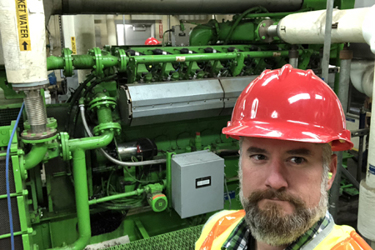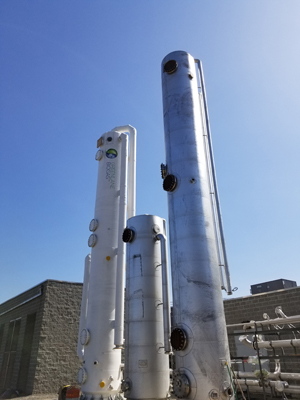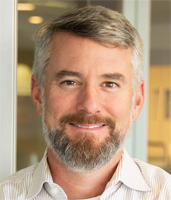The Contractor's Song: Organics To Energy — It's Only Natural
By Jeremy Holland

Ice will melt, water will boil
You and I can shake off this mortal coil
It's bigger than us
You don't have to worry about it
– Crowded House
It is highly doubtful that the “mortal coil” that Neil Finn was referring to is specifically the amount of organic waste that our society produces. However, he was prescient in recognizing that there is a very direct way to ease this burden and recover valuable resources from our waste. Organics to energy is the pathway to recovery and one of the many steps we must take to reduce our carbon footprint while also providing additional resiliency in energy supply.
What Organics Are We Talking About?
There are a wide range of organics that are considered for processing to produce energy. The most obvious sources for the water/wastewater industry have been the solids that are separated from wastewater and that are often processed in anaerobic digesters to produce biogas and biosolids. In fact, in nearly all cases when we are describing organics to energy, we are specifically constructing anaerobic digestion facilities to process some feedstock of organic material. Beyond municipal wastewater, there are organic diversions from landfills, waste from food and beverage industries, wood and agricultural waste, and a variety of animal manures. Depending on which waste or combination of waste is being processed, there will be a range of preprocessing and organics digestion steps necessary to have a highly functioning system that can produce the energy and soil amendments that are common from these facilities.
Picking The Right Tool For The Job
With the myriad choices for feedstock available for an organics to energy facility, the next aspect for a contractor to understand is the selection of system components of the facility. The style of digester, for example, could range from a covered anaerobic lagoon, to steel or concrete digestion tanks, to advanced digestion, or thermal hydrolysis systems. Temperature of systems could be nearly ambient to 160°C with associated hydronic system requirements.
 Waste constituents can result in production of toxic gases, such as hydrogen sulfide, which could range from a few parts per million to thousands. How material is received, how it will be stored, equalized, conveyed, and analyzed are all related to equipment choices that will require installation. Power and heat requirements (water will boil, after all!) will also drive infrastructure needs.
Waste constituents can result in production of toxic gases, such as hydrogen sulfide, which could range from a few parts per million to thousands. How material is received, how it will be stored, equalized, conveyed, and analyzed are all related to equipment choices that will require installation. Power and heat requirements (water will boil, after all!) will also drive infrastructure needs.
Finally, the site itself needs to be understood for what improvements will be necessary to accommodate an industrial facility. Since contractors will bond these projects, understanding process risk and how that is managed is a key component to successfully pricing and executing a project.
Different Forms Of Energy
In addition to processing equipment, the project will also need to determine what will be done with the finished products. Energy will be produced from the anaerobic process in the form of a biogas, which is comprised of 60 percent methane and 40 percent carbon dioxide, as well as a variety of trace elements that may need to be removed before the biogas can be used. One of the biggest decisions that will be made is whether the biogas will be used to produce electrical energy through combustion in a gas-fired generator or whether it will be cleaned and used as renewable natural gas (RNG). Electrical generation will require extensive power infrastructure installation and associated protective controls for connecting to a utility electrical grid.
RNG is primarily used in projects as a transportation fuel since there are very significant environmental attributes that can be monetized. This decision will drive a significant difference in mechanical equipment to clean the biogas for its intended use and potential for significant pipeline construction to convey that RNG to a point of sale. As an example, I developed an anaerobic project for a large rum distillery that produced roughly 6 tons per day of sulfur from hydrogen sulfide in its biogas. With the right mix of equipment, this sulfur was sold for use as a fertilizer admixture instead of discharged to a local landfill. Additionally, the use of the biosolids produced from the facility need a final destination. Depending on the original organic material, there may be limitations to where the biosolids can be used. Decisions here could include adding additional equipment to dry the solids, packaging for sale, or loading facilities for bulk removal from site.
Coda — Can I Help It If I Want To?
Our role as contractors in the development and construction of organics to energy projects is to provide input when we are observing the planning and design decisions that are being made for a given project. We need to weigh in on pros and cons of constructability and cost in light of the specific feedstocks and final products that go into the project, as well as consideration of the local conditions that will impact project development. It’s Only Natural that there will be more projects that develop organics to energy projects because there is a need to deal with these waste streams from a sustainability perspective, and attractive financial incentives for developers to pursue these projects. It’s our job to provide a guiding hand to help get these projects from an idea to a highly functioning facility that is a betterment to our world.
 Jeremy Holland is a Market Executive in the Water Infrastructure Market in Mortenson Seattle’s Operating Group. With 23 years of engineering experience, Jeremy has served as project principal, technical advisor, project manager, and design engineer. His industry knowledge spans a wide variety of projects, clients, disciplines, and engineering problems. A licensed Professional Engineer in Oregon, WA, and Puerto Rico, Jeremy received a Bachelor of Science in Chemical Engineering and a Bachelor of Arts in English from the University of Notre Dame, and a master’s degree in Business Administration from Portland State University. He is a board member of the Oregon Association of Clean Water Agencies and is the Co-Chair of the Water Quality Committee.
Jeremy Holland is a Market Executive in the Water Infrastructure Market in Mortenson Seattle’s Operating Group. With 23 years of engineering experience, Jeremy has served as project principal, technical advisor, project manager, and design engineer. His industry knowledge spans a wide variety of projects, clients, disciplines, and engineering problems. A licensed Professional Engineer in Oregon, WA, and Puerto Rico, Jeremy received a Bachelor of Science in Chemical Engineering and a Bachelor of Arts in English from the University of Notre Dame, and a master’s degree in Business Administration from Portland State University. He is a board member of the Oregon Association of Clean Water Agencies and is the Co-Chair of the Water Quality Committee.
